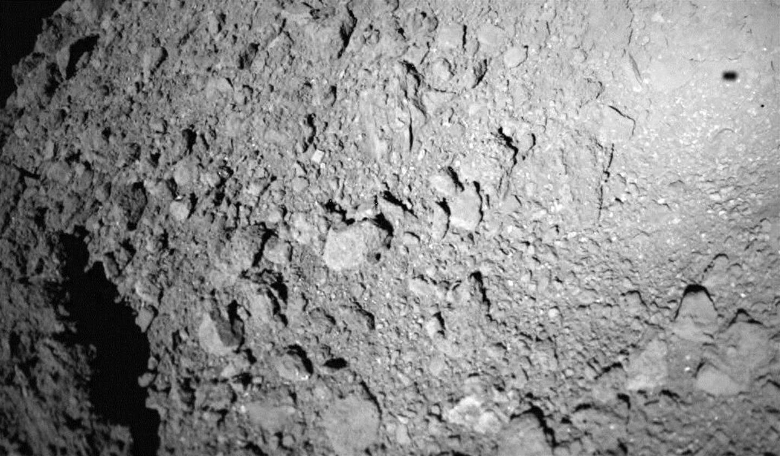It had a big job to do in a small amount of time, and the 16 hour window in which the Mobile Asteroid Surface Scout (MASCOT) had to study the surface of Ryugu was soon over. But that was enough, and the shoebox-size probe which had hitched a ride onboard the Japanese Hayabusa2 spacecraft along with the MINERVA-II1 rovers, successfully collected detailed data on the composition and nature of the asteroid before its battery died.
Developed by the German Aerospace Centre in cooperation with the French space agency (CNES), last week the scout dropped 51 metres from Hayabusa2 to land safely on the asteroid below – much to the relief of the international team waiting in anticipation in the MASCOT Control Centre in Cologne.
"From the lander's telemetry, we were able to see that it separated from the mothercraft, and made contact with the asteroid surface approximately 20 minutes later,” explained MASCOT project manager Tra-Mi Ho from the DLR Institute of Space Systems. "It could not have gone better.”
While the scout steadily descended in free fall – slower than an earthly pedestrian – to its destination, it booted up its camera (MASCAM) and took 20 pictures. The MASMAG instrument also switched on prior to the separation and took measurements to show the relatively weak field of the solar wind and the very strong magnetic disturbances caused by the spacecraft.
"At the moment of the separation, we expected a clear decrease of the interference field – and we were able to recognise this clearly,” explains Karl-Heinz Glaßmeier from the Technical University of Braunschweig.
After its triumphant landing, MASCOT was able to use a swing-arm to manoeuvre itself around Ryugu, allowing the scout to collect information from more than one location on the surface - this is the the first time that scientists will receive data from different sites on an asteroid.
“With MASCOT, it has been possible to, for the first time, explore the surface of an asteroid directly on site so extensively,” says Hansjörg Dittus, DLR Executive Board Member for Space Research and Technology.
The probe even managed to extend its short-lived mission by an hour before slowing to a halt on this far-flung object. Travelling 300 million kilometres to study an asteroid’s surface might seem like a long way to go for such a short-lived mission, but MASCOT is not alone. Along with the MINERVA-II1 rovers, the overhead Hayabusa2 spacecraft is slowly moving into position ready to collect a sample from Ryugu before heading to Earth with its prized possession.
Eventually, all of this collated data will help scientists not only understand more about these primitive building blocks leftover from the formation of the Solar System, but also how they helped the proto-solar nebula that we evolved from, develop in to what we see today.











